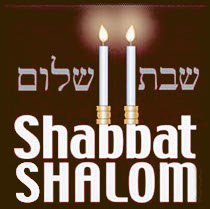Maem Loez Dvar Torah - Yom Kippur
Jewish unity is as defining an aspect of Yom Kippur as are the basic restrictions. It is
no wonder, then, that our Yom Kippur preparations require us to make amends with those
whom we have wronged.
The heightened sense of achdut which characterizes Yom Kippur serves as a basis for equating
the Jewish nation with the angels in heaven. The Tur based on a Pirkei D'Rabbi Eliezer quotes, 'Just as amongst the angels there is peace, so the Jewish nation on Yom Kippur.' There are many themes pof the power of Unity on Yom Kippur, however a fascinating incite on how Unity really is the optimom state that a nation should be at is seen by the Avoda of the Kohen Gadol every Yom Kippur when he was to go into the Holy of Holies for the Ketoret service.
The Avoda of the Kohen Gadol and his Tefillot on the day were significant in some sense how the nation was to behave amongst each other and the way they were to keep the Mitzvot connected to G-d. However a litmus test on how the nation is actually in the eyes of Hashem was seen by if the Kohen Gadol would make it alive from the Holy of Holies in this critical Yom Kippur service he would carry out.
Let's first take a look at comparing the two time periods of the First and the Second Temple. We find that the transgressions of the Jews, as a nation, which resulted in the destruction of the First Temple were attributed to predominantly to idol worship (Yoma 9b), which is a serious Man against G-d transgressions. However the Second Temple was destroyed due to the transgression of Baseless Hatred, the lack of unity amongst the Jews in Israel (Yoma 9b)! If we look further into this, we know that the Kohen Gadol, represented the Jewish nation as a whole, if he would come out alive from the room, it was a sign that Hashem was happy with the nation as a whole. We know that the First Temple stood for 410 years, whereas the Second Temple stood for 420 years. Furthermore the Talmud relates that during the First Temple, there were only 18 Kohen Gadolim, each Kohen Gadol on average staying
22 years in his position, which was a good sign of Hashem's satisfaction among the people despite there sin's. However during the Second Temple era, in the 420 years that the Temple stood, there was 300 Kohen Gadolim (Yoma 9a)!! Each Kohen Gadol barely lasted the year, obviously as a nation; Hashem was not satisfied with the
Jewish people, what was the sin? Hatred amongst each other, a lack of Unity!! This is one of the many proofs that G-d does not like it when we are not United.
The whole point of the days of Rosh Hashana and Yom Kippur is to repair broken relationships, ask forgivness to each other for the wrongs we may had done during the year. At the end of the day, we could earn Teshuva on Yom Kippur for the transgressions we may have done gainst G-d by serious repentance, however at the same time we have to ask forgivenss from the others we may have hurt during the year and try and bond with each other as if we are a powerful unit. Hope you all have a meaningful fast.

 Share on Twitter
Share on Twitter Visit our Facebook page
Visit our Facebook page